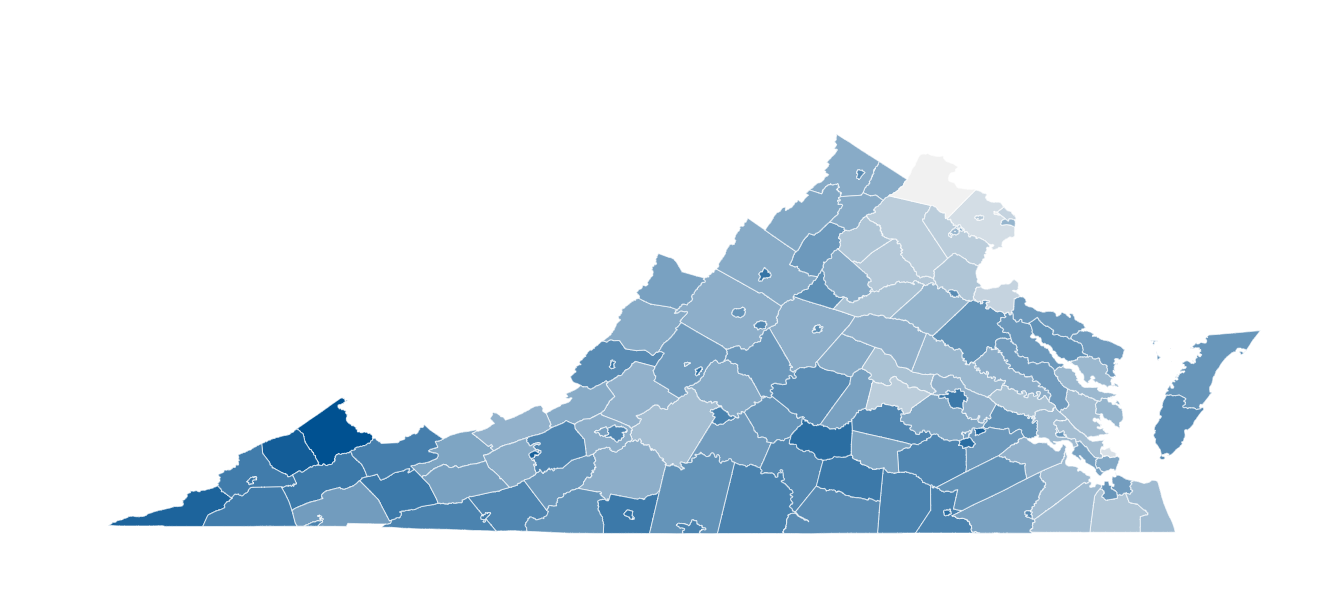
Many of the safety nets that once strengthened families – schools, childcare, affordable housing, healthcare costs, and more – have been weakened by social and political factors. We need to fix it.
by Martin Davis
EDITOR-IN-CHIEF
Budget season is by its nature prone to instilling anxiety in our communities. That’s certainly true this year, with all three school systems facing significant financial shortfalls (see our reporting on the budget woes in the Fredericksburg, Stafford, and Spotsylvania school systems).
Schools aren’t the only ones concerned about the budgets to come.
In Fredericksburg, mounting pressures to fund looming projects like a fire station, the new middle school, and the water treatment plant are stressing the City’s fiscal resources. Stafford similarly faces pressures to deal with a surging population. And in Spotsylvania, the list of fiscal challenges the county faces is long.
What gets lost in these governmental discussions too often, however, are the realities facing young families in our region.
It’s not just inflation that is hurting them – though this certainly doesn’t help. It’s that we’re throwing these young families to the proverbial fiscal wolves.
Canary in the Coal Mine
When the Advance broke the story about KidStation daycare – located on the Mary Washington Healthcare campus – closing, the reaction from families was immediate, and it went far beyond those directly affected by the closure.
Childcare, as we have been reporting, is having a crushing impact on young families.
Parents looking to place an infant (up to 16 months) in a [Stafford daycare] center will pay an average of $232 a week. Per year, that comes to a little more than $12,000. … Spotsylvania and Fredericksburg are less expensive, but “affordable” isn’t a word that many families would use to describe the costs. The average cost for an infant at a center in both locales is $218 a week, or about $11,300 annually.
For families with two children, the cost can easily outstrip a parent’s paycheck. That’s what Valerie Irizarry told the Advance.
“Afterschool care for my three (of four) kids would cost more than my weekly salary,” but cost wasn’t the only problem. Finding a facility that could work with the range of her children’s ages was even more difficult.
If childcare were the only financial strain, parents might feel less stressed. But this is on top of the already soaring cost of housing in our area.
New information from the Fredericksburg Area Association of Realtors shows the median home price in our region is $432,000, which is up 3% over last January. The total sales volume of $153 million is up 8% percent over last January.
The cheapest homes in our region? Caroline County, with a median price tag of $350,000.
With a low stock of available housing, and a booming population, these prices are only projected to climb.
Renting certainly offers no relief. According to Zillow, the average rental price in Fredericksburg is $1,950.
Want more evidence that young families are stressed? Some 23,000 families are food insecure in our region. Meanwhile, the number of people using the Fredericksburg Food Bank is surging.
In Fredericksburg itself, the percentage of the population that is Asset Limited, Income Constrained, Employed (ALICE) is fully 49%. In Caroline County, it’s 53% of the population. In Spotsylvania, it’s 31%, and in Stafford 26%. Certainly better, but in Stafford more than one-quarter of the residents in the fastest growing county in our region, and one of the fastest growing in the commonwealth, is ALICE.

With these pressures, saving for a brighter tomorrow becomes tougher.
Scarce resources are going to day-to-day living costs.
And because people are renting, they’re not building home equity, which is the single greatest force for building wealth that most people have in their tool boxes.
And then there’s the surging cost of tuition, which has consistently outstripped inflation. According to CollegeSimply, the average tuition cost in Virginia for in-state students was an eye-popping $15,942 in 2021-22. That cost is making many – rightly – reconsider the value of a college degree.
Our Families Need Help
The acceleration of costs that are falling on young families did not happen suddenly, but is the result of decades-long policy decisions on both sides of the political aisle.
The surging cost of higher education, for example, appears to be correlated to the expansion of federal student loans that began during the Clinton Administration. It’s also tied to state legislatures pulling back significantly on how much of higher ed they fund.
The rising costs of housing is directly related to too little development, per a report by JLARC. But it’s also tied to poor loan practices that made money too easy to get.
Childcare costs have been fueled by rising costs of doing business, and the costs associated for opening and running a center. Also, because more families are two-income households – often out of necessity, the demand for childcare is rising. Families are left not only struggling to find placement, but stuck with exorbitant bills when they do find it.
Cuts to federal subsidies that support the working poor in securing food have pushed more into food insecurity.
This list could grow, but the point is made.
Young families are bearing more and higher costs associated with daily living. Many of the factors driving these costs are outside the realm of local control. Inflation rates and federal funding decisions are what they are.
But there are things we can do locally to help families out. This report from the National Governor’s Association provides some ways that states and local governments are working to shore up families.
It’s a good start.
But the greatest thing we can do is for each of us, as a community, to become more aware of the challenges families are facing.
Public schools are the obvious hub for this. It’s where the vast majority of our children and families interact on a daily basis. Schools are constantly developing ways to help, and volunteers are needed. Fredericksburg, Spotsylvania, and Stafford all have dedicated programs, for example, that serve homeless students. There are also feeding programs at most schools for children whose households are known to be short of food. A simple call to your local school to ask if you can assist will be welcomed.
Government has a role to play too, however. It can convene people, organizations, and leaders to begin the discussions that begin to move the needle on some of our more challenging problems, like childcare.
Too many families are on the cusp. It’s time to build the community-based social nets that will help catch, and then strengthen, them.




